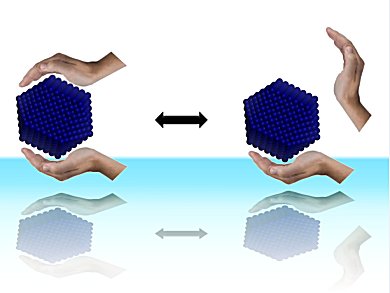Solvent-dispersed metal nanoparticle (NP) catalysts have shown excellent activity in a series of reactions compared to their surface-immobilized counterparts. The intrinsic instability of solvent-dispersed NPs, however, necessitates the use of stabilizers, which can hinder the activity of the catalysts.
Paul J. Dyson and co-workers, Ecole Polytechnique Fédérale de Lausanne, Switzerland, have designed a stabilizer based on bipyridine (bipy), which has also been used for stabilizing nanocatalysts in ionic liquids or on solid supports. The imidazolium-functionalized dimerized bipy ligand increased both the stability and activity of rhodium NPs.
Rh NPs catalyzed the hydrogenation of toluene to methylcyclohexane, which has potential for hydrogen storage, with yields of up to 95 %. Studies on the electronic properties in the reaction showed ligand dissociation to be the critical mechanistic step. In contrast to modified bipy ligands, the dissociation of which induced catalytic instability, electron-poor dimerized bipy stabilizers gave the NPs high catalytic activity and stability.
Size-distribution analysis by using transmission electron microscopy showed an Rh NP size of 2–5 nm across the 4,4′-modified dimerized bipy ligand stabilizers with CO2Me, Me, tert-butyl, MeO, or NH2 substituents at the 4,4′-position. A much broader size-distribution was observed for the Cl-modified dimerized bipy ligand. The Rh NP solutions were also analyzed by using X-ray absorption near-edge and extended X-ray absorption fine-structure spectroscopies.
- Rational Design of a Molecular Nanocatalyst-Stabilizer that Enhances both Catalytic Activity and Nanoparticle Stability,
R. R. Dykeman, Y. Yuan, N. Yan, H. Asakura, K. Teramura, T. Tanaka, P. J. Dyson,
ChemCatChem 2012, 4, 1907–1910.
DOI: 10.1002/cctc.201200552


